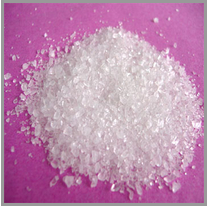Lithium Fluoride
Lithium Fluoride, LiF, is typically a white inorganic compound, although it may appear colorless until ground into finer particles. It is soluble in acid and slightly soluble in water, while insoluble in ethanol and acetone.
Due to lithium generally being a harder material to come by, lithium fluoride is also less readily accessible. Naturally occurring lithium fluoride exists as the rare mineral gricite.
Lithium fluoride finds the most use in ceramic, chemical (especially molten salt), and optical applications.
Ceramics
In the ceramic industry, lithium fluoride is sometimes used for manufacturing enamels and glazes, reducing kiln mild improvement in thermal shock resistance, abrasion resistance and acid resistance.
Glass
Lithium fluoride has a large bandgap which causes it to have an extreme UV transmission. This results in lithium fluoride having the most transparent crystals to short wavelength UV radiation, and makes this material especially useful to special UV optics. Lithium fluoride is capable of transmitting beyond the VUV range and is also used in X-ray spectrometry.
Metallurgy
In metallurgy processes, lithium fluoride is sometimes used as welding/soldering flux, and is a particularly popular choice for aluminum and magnesium metals. Lithium fluoride is also used in the aluminum industry to improve the electrical efficiency of the additive, as a neutron shielding material in the atomic energy industry, and in molten salt reactors as a solvent.
Additional Notes:
*Lithium fluoride is an essential component of fluorine electrolyte cell. In its high-temperature molten state, it functions in batteries as an electrolyte component.

| CAS | Product | Chem | Purity | Product Code | Quote |
|---|---|---|---|---|---|
| 7789-24-4 | Lithium Fluoride | LiF | % | FLR-06-X | Quote; |
| Chemistry | TDS | SDS |
|---|---|---|
| LiF | Request TDS | Request SDS |
Industrial/Application_tags:
Ceramic, Glass-Optical, Metallurgical






